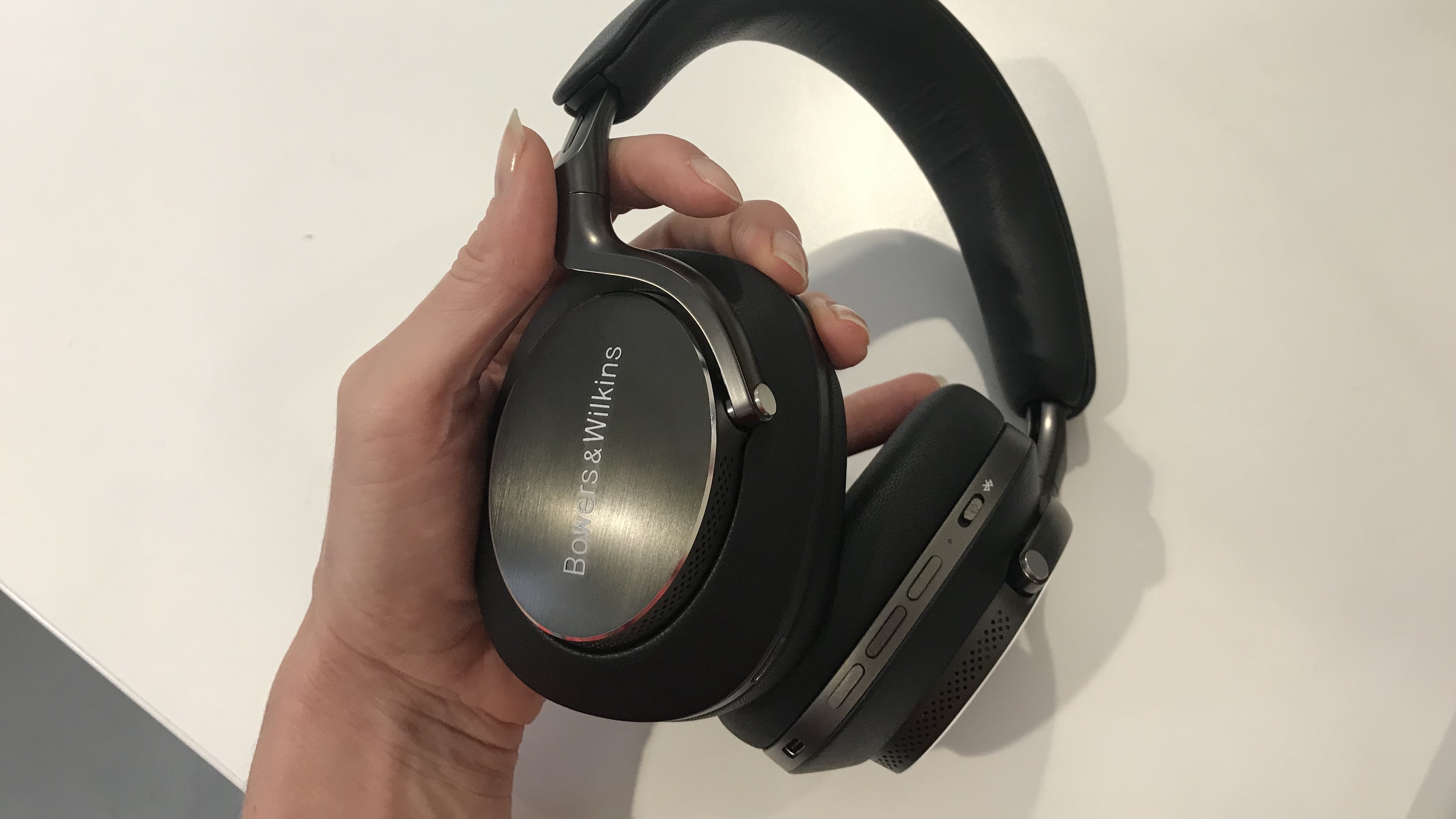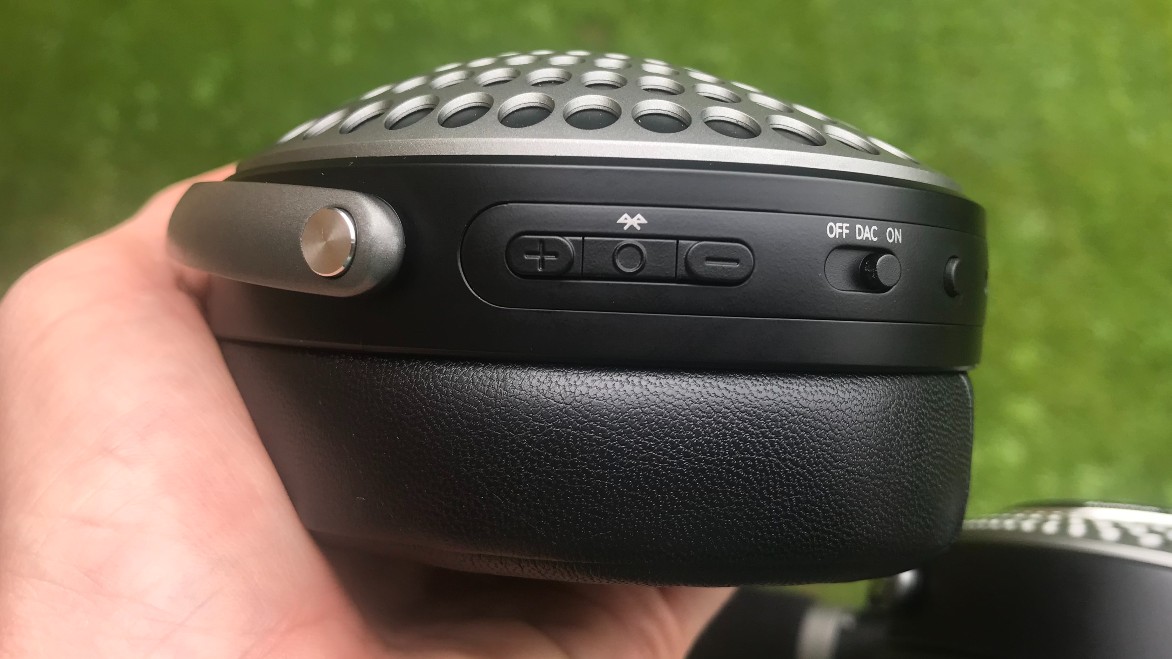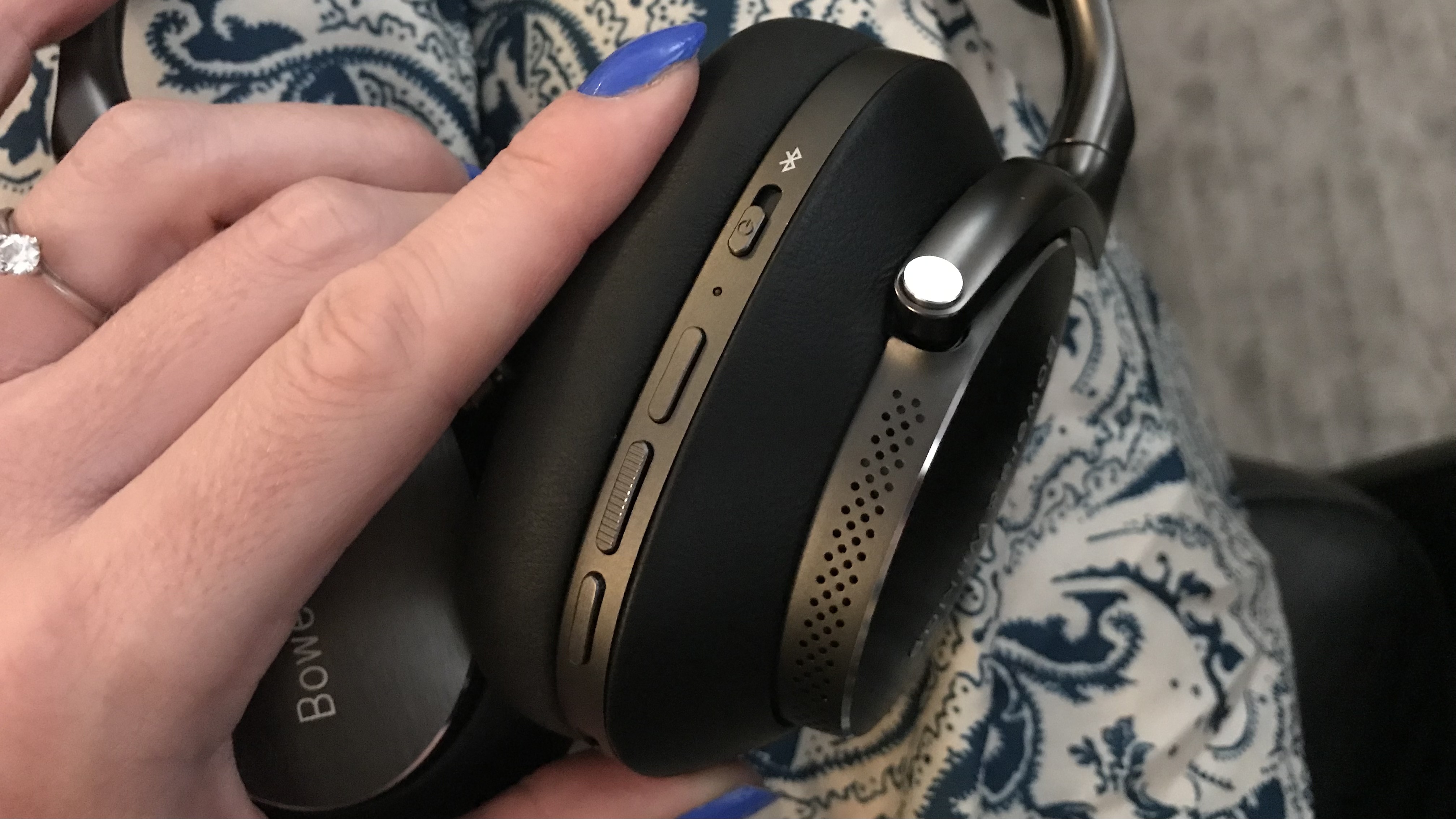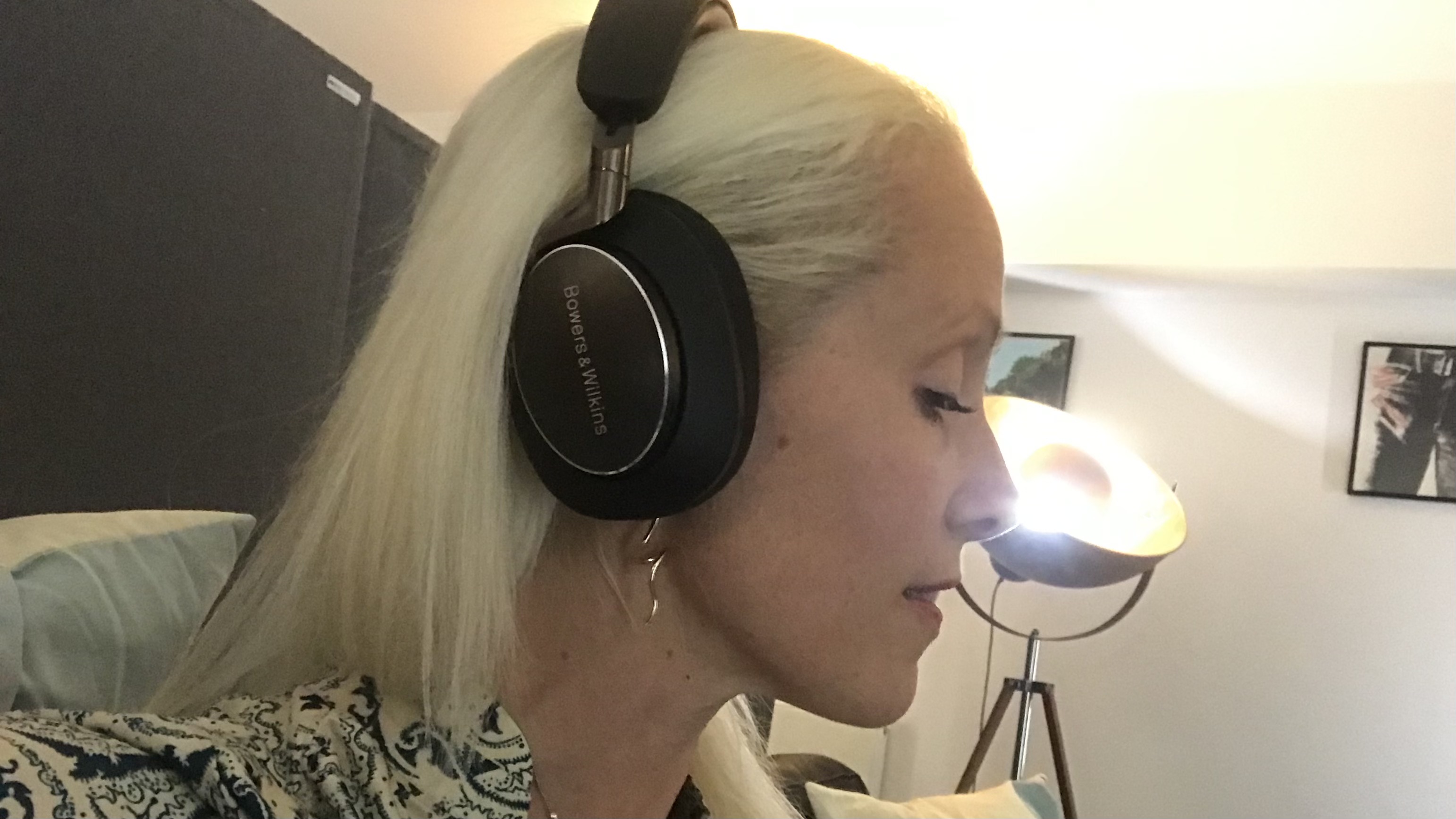Bowers & Wilkins PX8 vs Focal Bathys: which high-end wireless over-ears are best?
Two heavyweight contenders fight it out for comfort, features, battery-life and sound-quality

It's clash of the titans time, folks. How does Focal's newest heavyweight headphone proposition compare to the best Bowers & Wilkins can achieve in a closed-back over-ear headphone and hang the cost?
You'd be forgiven for thinking there's not much difference between them – both boast aspirational looks, ANC, on-ear touch controls, an aluminum-accented build, a recent release date (within days of the other) and glowing four-and-a-half star reviews from this very publication.
But don't be duped. There are big differences – first off, a $100 / £100 price variance – and while we don't anticipate either seeing a Black Friday headphones discount during the massive event known as Black Friday on November 25, if you're going to spend big, you need to make it count.
Regular readers and audio enthusiasts alike will have noted the arrival of the Bowers & Wilkins PX8 (the UK audio specialist's top tier offering, above the PX7 S2 and now enhanced by a beautiful 007 Edition) and the Focal Bathys, the St. Etienne-based headphone manufacturer's debut Bluetooth over-ears.
Spoiler alert: these are some of the best over-ears we've been lucky enough to place… well, over our ears. But that doesn't help you choose which is best for you now, does it?
The thing is that I have personally spent a lot of time reviewing both of them, and I can help you decide. Read on for all of the major differences between these heavyweight high-end audio contenders, and which has (in my opinion) dealt the knockout blow.
Bowers & Wilkins PX8 vs. Focal Bathys: release date and price

Bowers & Wilkins' PX8 wireless over-ears were released on September 28, 2022, priced $699 / £599 / AU$1150.
Sign up for breaking news, reviews, opinion, top tech deals, and more.
A mere six days later (on October 4, 2022), the Focal Bathys became available to buy, priced $799 / £699 / €799 (around AU$1,210).
Now then, dear reader, this makes them more expensive than all of the class-leaders in this space, including the Sennheiser Momentum 4 Wireless (at $349 / £300 / AU$549) and the category-leading Sony WH-1000XM5, which will set you back $399 / £380 / AU$550.
And let's not forget that the aforementioned Sennheiser over-ears boast double the stamina of the Focal Bathys and the Bowers & Wilkins PX8 – 30 hours (in wireless mode for the Bathys) versus 60 hours.
So, you should simply stop reading and move on to either of those, right? Not so fast. Not if you want the best possible wireless audio. Because whatever else I'm about to disclose, the sound quality in the two models under scrutiny here is exceptional and emphatically worth their respective price-points.
Bowers & Wilkins PX8 vs. Focal Bathys: design

Take a little look at these images. Suffice to say, they are both stunning sets of over-ears.
For flair and beauty, Bowers & Wilkins has hit a home run with the PX8. As we said in our hands-on review, the PX8 would look right at home around the neck of a bright young thing on a business-class flight to Milan. The die-cast aluminum arms, diamond-cut bright metal detailing and Nappa leather trim elevates the build to high-end territory.
Similarly, the Focal Bathys are a delight to behold – especially with the backlit flame on each ear cup is illuminated on 'high'. Anyone familiar with the company's previous hits such as the Focal Stellia will know that the trademark cutaway, almost web-like ear cup accents sparkle and shimmer under the light to put one in mind of high-ticket jewelry.
Both models echo the current move towards designs with cups that rotate to lie flat but do not fold up into the headband (as the excellent Sony WH-1000XM4 did) but in each case you get a lovely hard-shell travel case. The B&W option is particularly nice since the supplied cables (USB-C to USB-C for charging, USB-C to 3.5mm if your device has such a port) have their own little compartment with a magnetized lid, situated in the dead space beneath the arc of the headband. The Focal option, on the other hand, includes USB-C to USB-C cable for both charging and for the USB-C DAC mode (which nets you an extra 10 hours of battery for up to 40 hours of listening and grants access to hi-res audio support up to 24bit/192kHz), a 3.5mm to 3.5mm headphone jack cable (which gives you 35 hours of playtime) and a USB-C to Lightning dongle.
The comfort levels are fantastic across both the Focals and the B&W headphones, with ample padding on the underside of the headband and a clamping force that's as good as we've ever felt.
But this is where one set of cans has the upper hand. The B&W PX8's headband moves silently and smoothly, while the Focal Bathys clicks a little.
And while both models offer a traditional, physical button approach when it comes to on-ear controls, the PX8's buttons work beautifully, with volume, playback and power buttons on the right ear cup and a 'quick action' button on the left, which we use to quickly switch ANC.
The on-ear physical buttons on the Focal Bathys however feel a bit flimsy and prototype-esque, and we do find them hit-and-miss during use. The skip-forward option (which should be as simple as a double-press of the central button between the volume up/down options) to move to the next track proves particularly illusive for us – the Bathys either ignore us, or pause the music and resume it, which is a shame.
Winner: Bowers & Wilkins PX8
Bowers & Wilkins PX8 vs. Focal Bathys: battery life

This is a fairly straightforward one, with a few caveats.
Both the Bowers & Wilkins PX8 and the Focal Bathys can last for 30 hours of wireless listening.
Perhaps we might have hoped for more than the 'standard' 30-hour battery life given the aspirational nature of both propositions, although this is better than both the Bose QuietComfort 45 and Bose Noise Cancelling 700, which offer between 24 and 30 hours.
A quick 15 minute charge of the B&W cans gets you seven hours playback too – a claim we tested and found to be true – while the same time juicing gives only five hours on the Focal Bathys.
However, if you're prepared to get wired, the Focal Bathys can give a little more: the USB-C DAC mode nets you an extra 10 hours of battery for up to 40 hours of listening, while the 3.5mm to 3.5mm headphone jack cable gives you 35 hours of playtime – yes, the power must be 'on' to use this, so you're not listening passively.
Winner: Focal Bathys
Bowers & Wilkins PX8 vs. Focal Bathys: features

This is a little more involved. Both the Bowers & Wilkins PX8 and the Focal Bathys boast good, rather than excellent spec sheets, and there are pros and cons to each.
The Bowers & Wilkins PX8's ANC profiles comprise on, off, or pass-through – none of which can be toyed with or dialled up if you'd like to. The Focal Bathys' ANC solution involves 'silent', 'soft' and 'transparent' options, but again, the two ANC profiles and one transparency option cannot be tweaked and in the Focal model there's also no wearer detection, so your music won't automatically pause when you remove them.
Bowers & Wilkins' PX8 over-ears do support wearer detection and auto-standby (which sends them into low power state after 15 minutes of inactivity) and nice touches here include the ability to set the streaming quality (using your mobile data or Wi-Fi) and also the wearer sensor, the latter at low, normal, or high. If the PX8 fail to pause when you lift an ear cup to talk to a colleague, switch it to high. Find them pausing unexpectedly during use? Switch it to low.
That said, the EQ tabs within the PX8's Bowers & Wilkins Music companion app involve bass and treble tabs only, so anyone hoping for full five-band EQ settings is out of luck), but you do get a very good five-band EQ optimization on the Focal Bathys.
But the big draw for audiophiles is within the Focal Bathys, because the bundled USB-C to USB-C cable grants you access to decoding in up to 24bit/192kHz hi-res audio, depending on how good your file is. It sounds sublime – but it's interesting to note that the glorious wired performance is a major selling point given that this is supposed to be Focal's foray into wireless headphones.
In terms of wireless Bluetooth versions and codec support, the B&W PX8 come toting Bluetooth 5.2 plus support for aptX Adaptive (one of the best Bluetooth codecs available today) as well as aptX and aptX HD, and the six mics in total (four for ANC, two for call-handling) make for clear phone calls during our testing.
The Focal Bathys' Bluetooth 5.1 codec includes support for both aptX and aptX Adaptive for the best Bluetooth (and lowest latency) wireless resolution currently available – oh, and in case you were wondering, the name Bathys comes from the word ‘bathyscaphe’, the first submarine exploration vehicle.
What you won't get is support for Sony's higher-resolution LDAC codec in either model – but that's a relatively minor issue when aptX Adaptive is on the menu.
Finally, apps. Both are likeable – the Bathys' companion Focal and Naim app even asks you to swipe right for Focal or left for Naim, like some sort of audiophile dating app – and have every necessary feature to aid your listening pleasure.
But the Bowers & Wilkins PX8 have two bonus features. Firstly, the Music app now greets you with "spaces" and can group your Bowers & Wilkins products accordingly for multi-room audio when you get home, similar to that offered by Apple Home or Amazon's Alexa app. Secondly, it now corrals your streaming services into one place (provided these are Tidal, Deezer, SoundCloud or Qobuz, although B&W hopes to work with Apple Music in the future) and because this one app now rules the roost, it creates a B&W ecosystem whereby whatever's coming through your cans could simply transfer to your Zeppelin, Formation Wedge or other supported B&W speakers when you walk through the door.
Winner: draw
Bowers & Wilkins PX8 vs. Focal Bathys: sound quality

Ready? OK strap in, it's about to get spicy.
Both of these products can lay claim to stunning five-star sound quality. But the sound profile is different in each – and your preference here will likely be the key variable in choosing which set of high-end over-ears you go for.
The Bowers & Wilkins PX8 offer supreme agility alongside a weighty but lithe bass. It's punchy, it's fun, it's zealous. The Focal Bathys are all about spatial depth, neutrality, texture and layering.
Compared directly (and only directly, you understand) there's a difference in terms of the exuberance and fun of the PX8 versus the detail, expanse and refinement of the Focal Bathys. The PX8 loses out fractionally through the lower midrange detail to that which can be gleaned in the Focal Bathys, but if you want bass clout and dynamic acrobatics, it's the PX8 for you.
Again, which goes straight to your heart comes down to whether you prefer an integrated, detailed, expansive, refined listen (Bathys), or something boasting agility and an extra ounce of dynamic build and oomph over a fractional modicum of expanse (PX8) but again, it's a very closely run race.
Winner: draw

Bowers & Wilkins PX8 vs. Focal Bathys: Verdict
As you can see above, the Bowers & Wilkins PX8 won us over for design and the Focal Bathys edged it for battery life, but we were unable to split them for features and sound quality.
If you're after the best noise-cancelling headphones, your money would be better spent on the Sony WH-1000XM5 or Bose QC 45 – the noise-nixing in both the PX8 and the Bathys cannot better these models. But for sound quality and sound quality alone, this is where to focus.
Want hi-res wired audio to boot? Go for the Focal Bathys. Own a Bowers & Wilkins speaker at home? Go for the PX8, because it'll create a great ecosystem in the Music app and, as a result, in your home.
Need auto-off wearer detection? Bowers & Wilkins. Want a five-band EQ tab? Focal Bathys. See how difficult it is?
Ultimately, I adore the build and overall aesthetic of the Bowers & Wilkins PX8, but the expansive, integrated, detailed hi-res audio chops in the Focal Bathys had me hook line and sinker, as soon as I heard it.
Then again, for grime and hip-hop, I find myself reaching for the Bowers & Wilkins PX8. And for me, the look of them gets me every time…

Becky became Audio Editor at TechRadar in 2024, but joined the team in 2022 as Senior Staff Writer, focusing on all things hi-fi. Before this, she spent three years at What Hi-Fi? testing and reviewing everything from wallet-friendly wireless earbuds to huge high-end sound systems. Prior to gaining her MA in Journalism in 2018, Becky freelanced as an arts critic alongside a 22-year career as a professional dancer and aerialist – any love of dance starts with a love of music. Becky has previously contributed to Stuff, FourFourTwo and The Stage. When not writing, she can still be found throwing shapes in a dance studio, these days with varying degrees of success.